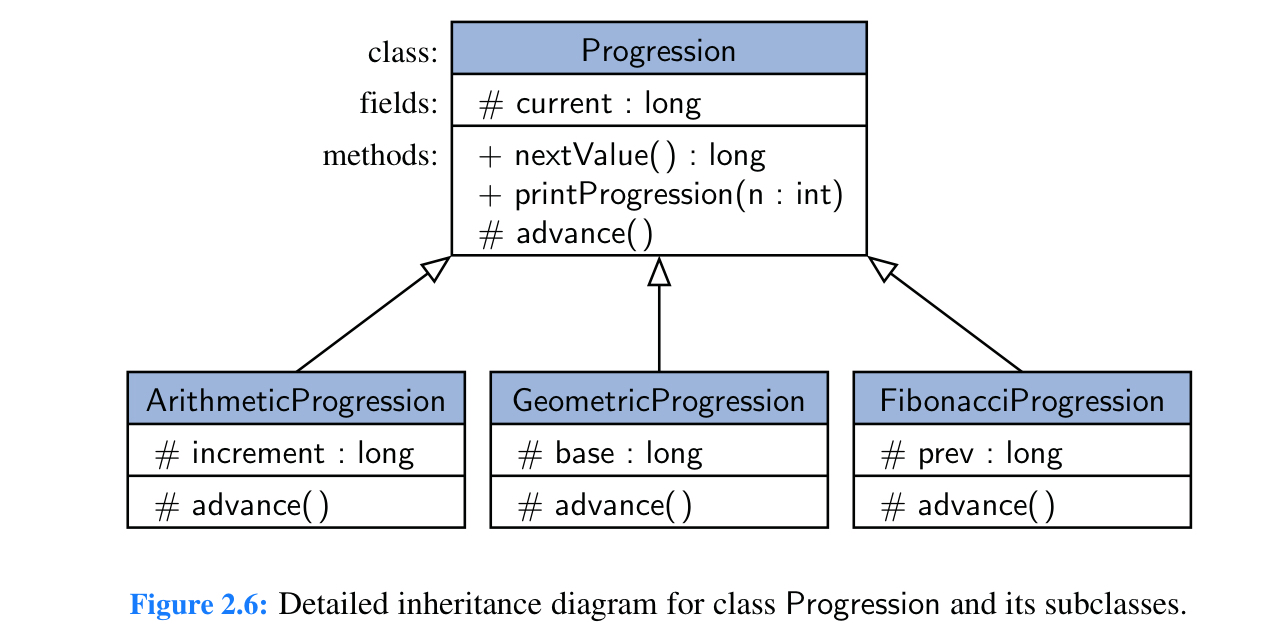Lecture 11: Some more OOP practice
Textbook section
2.2-2.3
Progression class
The book uses a class called Progression (and its subclasses) to demonstrate inheritance. This hierarchy of classes represents numeric progressions: for example, 0, 1, 2, 3, 4, 5,... or 1, 1, 2, 3, 5, 8,... An arithmetic progression determines the next number by adding a fixed constant to the previous value (e.g., 1 in the first example), and a geometric progression determines the next number by multiplying the previous value by a fixed constant. In general, a progression requires a first value and a way of identifying a new value based on one or more previous values. You can check out the On-Line Encyclopedia of Integer Sequences for more inspiration, though many of those integer sequences are not progressions. (How might we extend our hierarchy to account for these?)

Files used in class
- Progression.java
- ArithmeticProgression.java
- GeometricProgression.java
- FibonacciProgression.java
- ProgressionDemo.java
Additional exercises
- Implement another progression subclass. (You can look at the On-Line Encyclopedia of Integer Sequences for inspiration or try to think of one yourself. What other operations can you do with numbers? How about storing more than one previous?)
- Think about how you would add another class above
Progressionto so hold generalized integer sequences. What changes to theProgressionclass would you make?